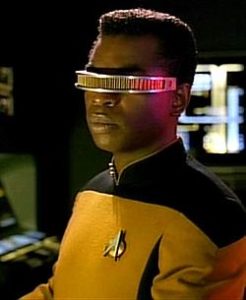 Eye of the beholder
Eye of the beholder
Familiar with the expression “beauty is in the eye of the beholder”?
Various forms of the phrase date all the way back to Greece in the 3rd century B.C.
However, Margaret Wolfe Hungerford is generally credited with the first use of that exact phrase in her book Molly Bawn, originally published in 1878. The cliche simply means that different things will appeal to different people.
The eye is a collection of tissue that forms an organ and provides visual feedback from our physical world. The ability to see an adversary who is fighting blind is almost always gives an unsurmountable edge to the fighter with unimpaired vision.
Some biologists, notably Jerry Coyne, describe the eye as an imperfect creation or an organ that is easy to create. Coyne wrote,
The human eye, though eminently functional, is imperfect – certainly not the sort of eye an engineer would create from scratch. Its imperfection arises precisely because our eye evolved using whatever components were at hand, or produced by mutation. Since our retina evolved from an everted part of the brain, for example, the nerves and blood vessels that attach to our photoreceptor cells are on the inside rather than the outside of the eye, running over the surface of the retina. Leakage of these blood vessels can occlude vision, a problem that would not occur if the vessels fed the retina from behind. Likewise, to get the nerve impulses from the photocells to the brain, the different nerves must join together and dive back through the eye, forming the optic nerve. This hole in the retina creates a blind spot in the eye, a flaw that again would be avoidable with a priori design. The whole system is like a car in which all the wires to the dashboard hang inside the driver’s compartment instead of being tucked safely out of sight.
All of this bluster is to say how much better the Jerry Coyne eye would be as an improvement over the eye made by God. No engineer has produced an functionally operational equivalent eye, much less a superior version. There is no Jerry Coyne manufactured eye, or any artificial device that can replace a human eye and restores vision.
Science can do wonders with the existing organic material, but once the sight is gone, as of this date it cannot be restored. Yet Coyne claims science can make a better eye. So where is it?
Prosthetic devices may look real, but they do not restore vision. Unfortunately, those stylish Geordi Le Forge shades with the oil filter lenses don’t really exist – except as a prop from a television show. Apparently, the writers of Star Trek: the Next Generation seemed to realize the foolishness of suggesting artificial eyes would be superior to the ones we have, or else the entire crew would have worn the same apparatus.
Coyne isn’t the first biologist to foolishly claim the eye would be easy to make one or improve. In his summary statement at the Wistar conference , Dr. Waddington made the remarkably silly statement, “I think it is relatively simple to make an eye.” (pg 97)
Astonishingly, Ernst Mayr agreed with him, and the remaining participants were apparently too dumbfounded by the suggestion to respond. Mayr said,
Somebody quoted Darwin yesterday and, as with the Bible, you can quote him for one thing or another. In one place he said that it completely horrified him to think of the eye and how to explain it, and at another place he said once you assume that any kind of protein has the ability to react to light, once you admit that, then it is no problem whatsoever to construct an eye.
No problem at all to make an eye? Easy peasy? Respectfully, Drs. Waddington and Mayr, then why hasn’t science made one?
Dr. Trevor Woodhams and company at the local Woodhams Eye Clinic in Dunwoody do remarkable work using LASIK surgery to correct vision, but they are working with existing organic material. Corneas may be transplanted, but not entire eyes. Doctors do not perform artificial eye replacement with “bionic” eyes — that technology only exists in science fiction novels, movies, and television shows.
The latest and greatest medical miracles seem to be organs grown from stem cell tissue in a lab. Although the cultivated heart does not yet beat, it still qualifies as a significant scientific achievement. But if and when it does begin to beat, it cannot be considered an improvement over what God created. It is merely a replica, not a superior creation.
Perhaps they next can cultivate an eye. But it isn’t the same thing as making an eye from scratch, better than the real thing.
We cannot make a better heart, a better brain or a better eye. Our best efforts mimic God’s creation but never surpass it.
In his poem “Ode to a Grecian Urn”, Keats famously wrote, “Beauty is truth, truth beauty — that is all ye know on earth, and all ye need to know.”
To recognize beauty for what it is, we must first be able to see it.

Now that the de novo creation of G protein-coupled receptors has been linked from chemotaxis to phototaxis in all living genera it should become clearer that how we respond to visual input is conditioned to occur in the context of the energy-dependent chemical ecology of biophysically constrained life.